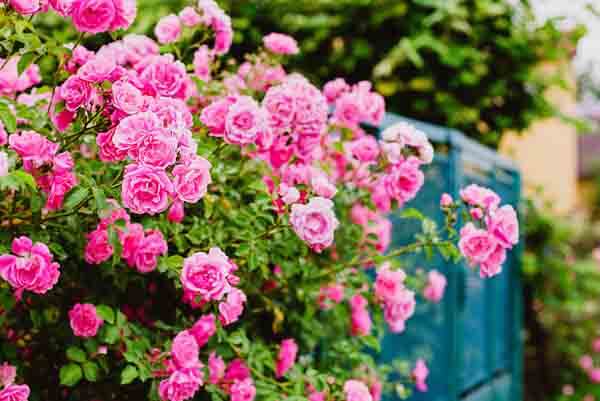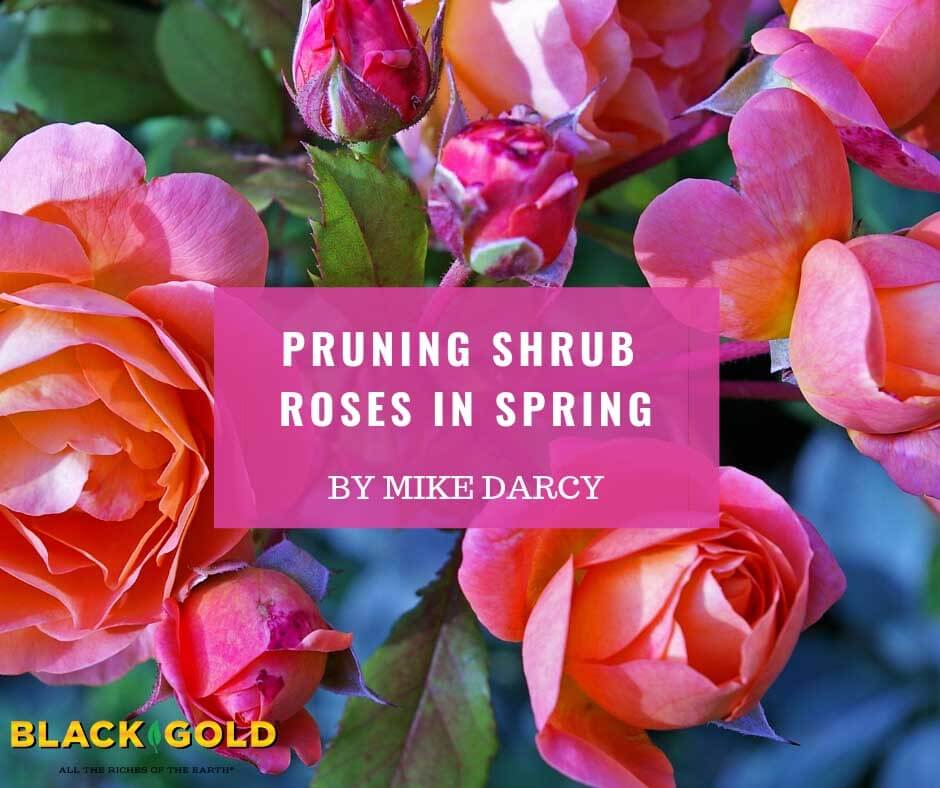
Pruning shrub roses in spring…exactly what does it mean when a rose is called a ‘shrub rose’? In Taylor’s Dictionary for Gardeners a shrub is defined as “A woody plant that is shorter than a tree and usually has several stems that branch from the base”. This definition would certainly fit many rose types, like floribunda (shrub rose crosses between polyantha and hybrid teas roses.), grandiflora (shrub rose crosses between hybrid tea and floribunda roses), rugosa (Rosa rugosa), musk rose (Rosa moschata), or other species shrub roses.
Putting the word ‘shrub’ in front of the word rose has several different connotations. On the Royal Horticulture Society website, they describe shrub roses as flowering just once in the summer and requiring little formal pruning, which is not true for contemporary, ever-blooming shrub roses. As I continued reading their website, I realized they were using the term “shrub rose” to denote what we would call old garden and species roses, (hybrid musk, damask, moss rose, gallica, etc.).
Modern Shrub Roses
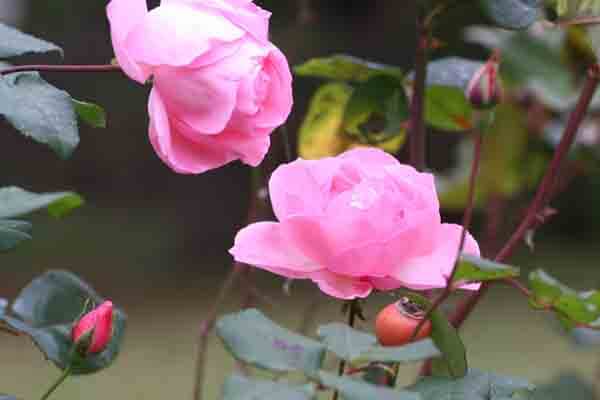
Most gardeners that I know would refer to a shrub rose as one that is bushy, has smaller flowers, masses of blooms, and requires very little maintenance. These are the roses that, here in Portland, we would see along the freeways with flowers that almost cover the shrub throughout the summer. These roses are also often used in commercial parking lots, and some homeowners use them as a mass planting in the front of their home in the space between the curb and the sidewalk.
One of the most popular of the shrub roses are those in the Knock Out® series, developed by Star Roses®. Introduced in 2000, the original Knock Out® is now the most widely sold rose in the United States. This ever-blooming shrub rose has rosy pink flowers, but new selections have been developed with flowers of pink, white, and yellow. It is a very vigorous shrub and is black spot resistant which has made it a favorite of Pacific Northwest gardeners. In my own garden, I have a grouping of Knock Out® roses and they provide a bright spot of color all summer and I have never seen a sign of black spot.
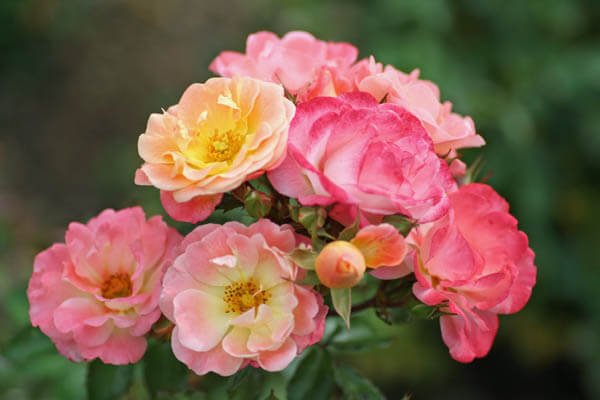
These are not the only shrub roses on the market, though. Many more, featuring more refined blooms are available through vendors, such as David Austin English Roses. Many of these choice shrub roses are award-winning and selected for disease resistance as well as their voluptuous blooms with great fragrance.
Another recommended group are the popular French Meilland® landscape roses, which are available as a groundcover, bush, or larger shrub roses and feature numerous flowers all season long. They are available in lots of colors and are also markedly disease resistant and low maintenance.
Pruning Shrub Roses
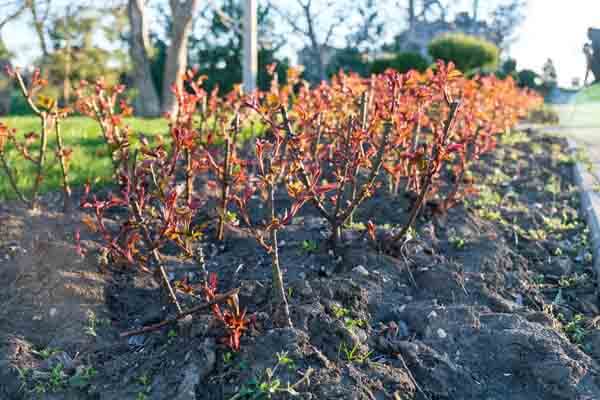
Before doing any rose pruning you’ll need sharp pruning shears or loppers and a pair of thick rose gloves with gauntlet cuffs that resist thorns. I also think it is a good idea to wear safety glasses. The months of February or March are ideal for pruning shrub roses. It is easier to make cuts when the foliage is absent and pests and diseases are yet to be a problem.
When pruning shrub roses, I go back to the Royal Horticulture Society and their web article about shrub-rose pruning where they suggest “little formal pruning.” This is largely because older shrub rose varieties bloom on old wood, but newer shrub roses bloom on new wood, and seasonal pruning can keep their height in check while helping them look tidier.
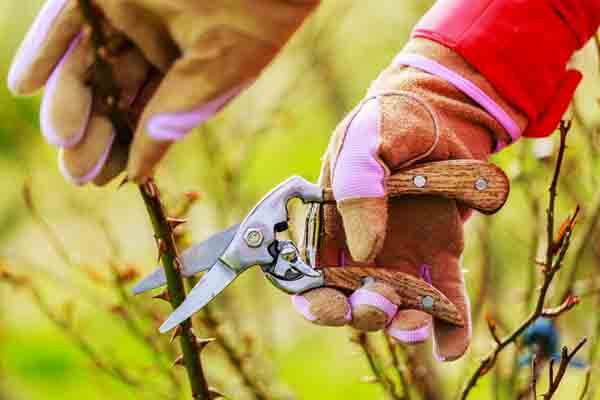
When you think of pruning Knock Outs®, these are the freeway roses that maintenance crews prune with power hedge shears! While I would not suggest that sort of extreme pruning for a homeowner, this does give an indication of how receptive they are to rough pruning. Home gardeners will see desired results if they cut shrub roses back just below the final desired height and width; well-established roses will branch out far beyond the cuts you make. Then prune out any dead, diseased, or broken branches, and thin out smaller branches to open up the bush to more light and air circulation. large, old shrubs can be renewal pruned back to 18 inches if they grow far beyond their boundaries.
My Favorite Shrub Rose
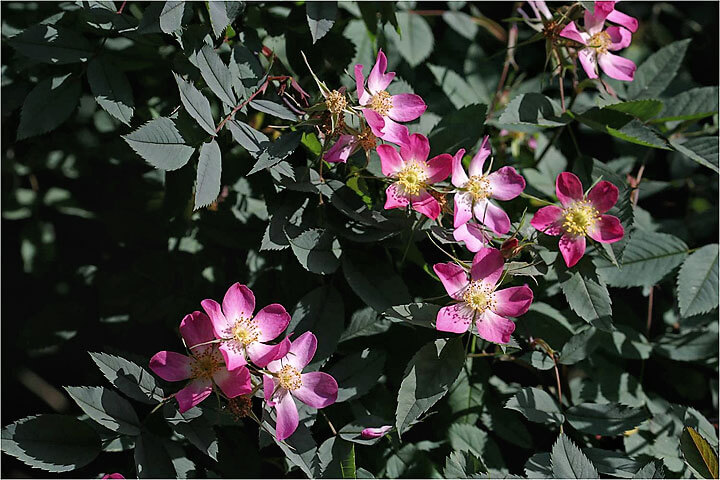
One larger shrub rose that I particularly like, is a species rose called Rosa glauca. This tall-growing shrub reaches 7-8 feet tall in my garden. It is a once-blooming rose with single pink flowers followed by red hips, however, another feature of this rose is the bluish color of the leaves. This is a beautiful background plant; even without flowers, the foliage looks good all summer. Each year I prune my plant to about half its height in March.
Do not be bashful about pruning your shrub roses. They are quite resilient and any cutting mistakes you make in March will probably not be evident by June.
I hope you, the readers of this Black Gold article, also have had an opportunity to see my Black Gold video on pruning hybrid tea roses.
